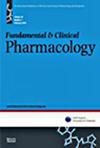Impact of Direct Oral Anticoagulant Uptake on Hospitalizations for Stroke/Transient Ischemic Attack, Intracranial Hemorrhage, and Gastrointestinal Bleeding in Individuals With Atrial Fibrillation: A Population-Based Study
Abstract
Background
Direct-acting oral anticoagulants (DOACs) have largely replaced warfarin for stroke prevention in patients with atrial fibrillation, yet their population-level impact on health outcomes and costs remains unclear. We examined whether the widespread uptake of DOACs was associated with changes in hospitalization rates and costs for stroke/transient ischemic attack (TIA), intracranial hemorrhage (ICH), and gastrointestinal bleeding among individuals with atrial fibrillation receiving publicly funded anticoagulation.
Methods
We conducted a population-based ecological time series study using administrative health data from Ontario, Canada, between 2003 and 2021. We used segmented negative binomial regression and generalized additive models to estimate immediate and post-DOAC uptake trends in hospitalization rates and costs following increased use of DOACs in 2012.
Results
We identified 12,134 hospitalizations for ICH, 59 946 for gastrointestinal bleeding, and 40 724 for stroke/TIA among anticoagulated individuals with atrial fibrillation. Following DOAC uptake, ICH rates (rate ratio [RR]: 0.88; 95% CI: 0.86–0.90) and costs (RR: 0.74; 95% CI: 0.62–0.88) declined immediately, with continued quarterly declines. Gastrointestinal bleeding rates increased initially (RR: 1.17; 95% CI: 1.14–1.20) and declined over time (RR per quarter: 0.99; 95% CI: 0.99–0.99). Gastrointestinal bleeding-related costs did not change significantly. Stroke/TIA rates remained stable, but hospitalization costs declined ($366 per 1000 individuals per quarter; 95% CI: −$562 to −$170).
Conclusion
DOAC uptake was associated with reduced ICH rates and costs and an initial increase but subsequent decline in gastrointestinal bleeding rates. Despite stable stroke rates, reduced costs suggest potential long-term economic benefits. Our findings support the real-world effectiveness and safety of DOACs.


 求助内容:
求助内容: 应助结果提醒方式:
应助结果提醒方式:


